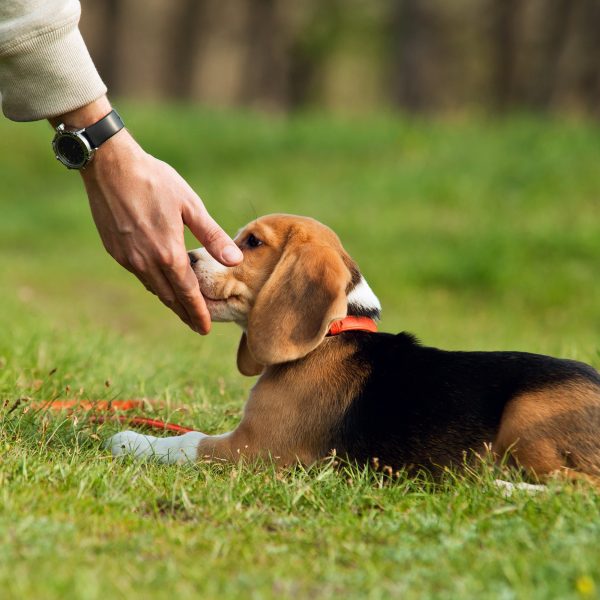How to Teach Your Dog Nose Targeting

Dogs experience the world through their noses. With nose targeting, you can train your dog to touch a target with the tip of their nose. Because the head and body tend to follow where the nose goes, targeting can be a useful technique in training and also in redirecting undesirable behavior to help reduce it. Here’s how to teach your dog nose targeting:
1. Choose Your Marker
Before you start to teach your dog nose targeting, you want to figure out what your marker will be to let your dog know that they are doing it right. This can be a clicker, praise like “yes”, “good”, etc., or both. You also want to have plenty of treats available as you are getting started.
2. Start With Your Palm
Start with the palm of your hand. Hold your hand out flat with your palm facing your dog. Place it about an inch or two away from them and wait for them to sniff at it.
3. Reward the Moment Their Nose Makes Contact
With your hand so close, it’s natural for your dog to press their nose to it and sniff. The moment their nose makes contact, click the clicker or praise your dog with the marker word you have chosen and reward them with a treat.
Make sure the treat is directly in front of your open palm so you clearly establish the reward with that placement. As they pick up on things, you can likely reduce the number of treats you give them and stick with positive reinforcement like praise.
However you approach it, just make sure you are rewarding them consistently for good behavior. This is one of the most valuable dog training tips.
4. Repeat the Routine and Try it in Different Locations
Repeat the routine as many times as needed. You want your dog to be enthusiastically touching their nose to your palm when you want them to. It’s also important to build this targeting behavior in different locations while also keeping distractions to a minimum as they are learning.
5. Introduce a Verbal Cue
As your dog starts targeting reliably, you can introduce a verbal cue for it. “Touch” is a common command for targeting, but you can use whatever works for you and your dog. You just want to make sure it doesn’t compete with other commands and that you keep it consistent throughout training.
Say the cue as you hold out your hand. Continue to reward and praise immediately when your dog touches their nose to your palm. After some practice, they should start responding to the verbal cue. If you are training a deaf dog, you might skip the verbal cue and continue with just nose targeting or incorporate a hand signal or other signal that works for you and your dog.
6. Add Some Distance and Variation
As your dog gets better at reliably targeting with the verbal cue, then you can start adding distance and some variation to the training. Start small with moving your hand a few inches away and slowly increasing the distance until your dog is targeting reliably from several feet away.
At the same time, you can vary the placement of your hand. You can try targeting higher or lower. You can also try placing your hand further away from your body or closer to teach your dog to target in a variety of situations.
7. Practice With Distractions
Once your dog is reliably responding to the verbal cue and targeting from a distance and with different hand placements, then you can start practicing it with distractions or in distracting environments.
You can start at home by adding a friend or another member of the family to the room to create distractions. Then, you can try doing things outside in the yard and work up to larger distractions, like a walk in a park or even a busy dog park.
These are just a few tips you can use to teach your dog nose targeting, which can be one of the jobs your dog can do at home. Once they have mastered targeting, you can use this technique to help calm them when they are anxious or overactive.
It can also be a useful technique when you are attempting to train your dog not to jump up or to stop barking. You can even use targeting to teach your dog new skills, train them for certain types of dog sports, like agility training, or create new games!
